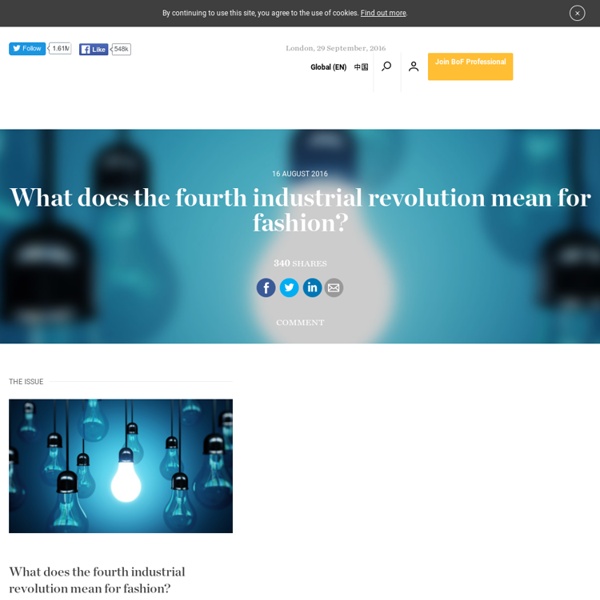



About Dr Vandana Shiva | Dr Vandana Shiva Dr Shiva at Bija Vidyapeeth Dr. Vandana Shiva trained as a Physicist at the University of Punjab, and completed her Ph.D. on the ‘Hidden Variables and Non-locality in Quantum Theory’ from the University of Western Ontario, Canada. She later shifted to inter-disciplinary research in science, technology and environmental policy, which she carried out at the Indian Institute of Science and the Indian Institute of Management in Bangalore, India Dr Shiva and Sir Edward Goldsmith at Bija Vidyapeeth In 1982, she founded an independent institute – the Research Foundation for Science, Technology and Ecology in Dehra Dun – dedicated to high quality and independent research to address the most significant ecological and social issues of our times, working in close partnership with local communities and social movements. Dr. Dr Shiva in Nubra Valley, Ladakh, India Dr. Dr. Dr. Dr. Dr. Internationally, Dr.
Decoding Amazon's Fashion Ambitions | Fashion-Tech | BoF NEW YORK, United States — In 2012, Amazon debuted its first fashion advertisement. It was reminiscent of an American Vogue spread and featured a dolled up Chanel Iman in a taut, alert pose. Printed across her shins was the phrase “Smart is Beautiful,” a tagline still employed by the glossiest division of the e-commerce and cloud computing giant, which generated combined revenues of $107 billion in 2015. Over the past five years, Amazon has made a series of moves aimed at the fashion market that go far beyond print advertising. The announcement of Amazon Fashion Week Tokyo | Source: Amazon Over the same period, Amazon executives have spent countless hours meeting with designers and brands across the pricing spectrum, trying to convince them to sell their products through the site. Even so, getting consumers to buy luxury products on Amazon.com is just one small piece of the company’s wider fashion strategy. Taking the Long View At Amazon we like things to work in five to seven years.
This is how to feed the world and end poverty at the same time Food & HungerShare ShareTweetEmail By 2050, the world will need to feed 9 billion people in a sustainable way, but in 2015, 792 million people still go to bed hungry every day. The scale of the challenge often clouds our ability to see anything beyond daunting statistics and imagine a world without hunger or poverty. Enter Grist, a platform that brings the planet’s most challenging conundrums to life through a mix of humour and insightful commentary. This awesome 150-second video makes the solution to hunger and poverty sound as easy as pie. Nearly half of all people who live on less than $2 a day depend on agriculture for their livelihoods. You can go to TAKE ACTION NOW and Tweet now to tell the Prime Minister of Italy to use World Food Day 2015 as an opportunity to lead the way in the fight against hunger and malnutrition.
Software Is Reshaping Fashion's Back End | Fashion-Tech | BoF NEW YORK, United States — From e-commerce to social media, digital has revolutionised the consumer-facing front-end of fashion, reshaping sales and marketing. Yet, for years, the industry’s less glossy back-end systems — used to manage everything from production to excess inventory — have remained relatively untouched. “Brands and retailers have been focused on what’s sexy,” says Ronen Lazar, co-founder and chief executive of Inturn, which helps brands more easily unload unsold inventory to off-price retailers. And while new platforms can certainly offer advantages, “technology in general creates really serious demands on time, from managing data flows and storage to [sharpening] accuracy and flexibility,” he adds. “Everyone has been putting it off to the side.” Now, as more millennials and executives trained in other sectors join fashion companies, expectations are rising and brands and retailers are rethinking their back-end solutions. Related Articles:
High-tech fashion design: Manus and Machina in haute couture FORGET repetitive-strain injuries. The human hand is on its way to becoming a casualty of the digital revolution in another way. Who needs to tap when you can talk to your computing machine? The hand, which for millennia has been central to the creation of magnificent works of art and the objects with which we live, is being rejected in favour of computers, code and machines. “Wedding Ensemble” (pictured), the show opener, would anywhere else be a show-stopper. Or so Prospero thought before reading the accompanying text. Mr Bolton calls his grouped displays “case studies”. Mr Bolton has a keen eye and acute judgment. Presented with a wardrobe by Ms van Herpen, a surrealist Cinderella would be overwhelmed with choices. This show makes a strong case that many of those doing the most exciting work today are engaged creatively with both manus and machina. The world seems permanently set to fast forward these days.
Desigual's Snapchat Filter Make-Up Looks Are The Most Talked About Thing From NYFW Instagram Whether you’re an avid fashion month follower, or you casually peruse the talking points as they filter onto the internet, you’ve probably seen the pictures — the most unexpected look of NYFW so far (it is only Day 2 after all, people) has got to be Desigual’s Snapchat filters. With the help of MAC make-up artists, models were sent down the runway at its SS17 show with the filters actually painted on their faces. Read: The celebrity Snapchats you need to follow Though it's unexpected from the Madrid-based brand, not known particularly for its tech-savviness or wit, it's fitting. There were also bees, deers and angels, and though the dog filter is a bit hashtag basic in real life, turns out it actually looks pretty great when painted onto your face. This will come as welcome face-paint-spiration for everyone who hates dressing up. While the fashion weeks are embracing all things tech, this is a direction we didn’t see it going but we’re oh-so happy it has.